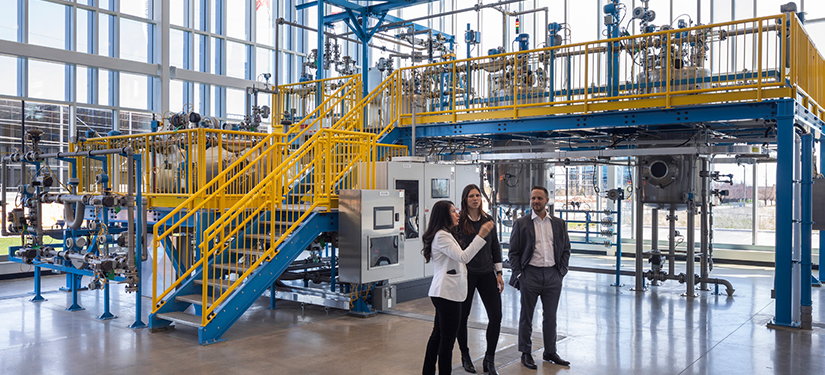
Smart Heartbeat technology to take centre stage at Partners in Process symposium January 26
Mike Edwards
News Endress+Hauser Heartbeat Technology instrumentation PlantPAx Rockwell Automation Samson symposium valves
Burlington, ON-based Endress+Hauser Canada has integrated Heartbeat Technology into a wide range of its measurement and analysis instruments to perform smart-sensor-equivalent tasks for an effective predictive maintenance program.
As part of its free Partners in Process Technology Symposium series of presentations, the company is inviting industry professionals to join it on January 26 to explore:
- Heartbeat Technology for improved plant performance and reduced operating expense
- Support for your installed base through every phase of the plant life cycle
- Engineering behind valve selection by SAMSON
- PlantPAx demonstration by Rockwell Automation
- The Endress+Hauser state-of-the-art Process Training Unit (PTU) with a wide range of the company’s instrumentation installed and fully functional.
REGISTER FOR THE SYMPOSIUM HERE
Heartbeat-equipped instruments use sensor data apart from the primary measured value to provide diagnostic, verification and monitoring capabilities that give in-depth insights into both the state of the measuring device and the process.
Watch Heartbeat Technology Demonstration:
A study conducted by AI specialist Senseye found that large industrial operations lose an average of 323 production hours per year, which represents millions, even tens of millions of dollars of losses per plant. Three out of four companies surveyed have made predictive maintenance an explicit strategic goal. Smart sensors are being utilized help reach such objectives.
Heartbeat Technology is used in measuring instruments for flow, level, pressure, temperature to monitor their function and offer insights into process conditions, says. Daniel Persson, Process & Portfolio Manager Innovation at Endress+Hauser. “With Heartbeat Technology, field instruments monitor their function and offer insights into process conditions. This makes it possible to identify anomalies reliably and take timely actions.” It can even extend the intervals in a preventive maintenance schedule.

Endress+Hauser Heartbeat Technology – Smart meters use sensor signals for new diagnostic, testing and monitoring functions.
Heartbeat’s ability to leverage signals apart from the primary measured provides many benefits, such as improved measuring reliability, increased efficiency in operations, achieved regulatory compliance, improved productivity, and reduction of unexpected downtime. With its diagnostic function, devices self-test continuously in the background and report their condition with a high diagnostic coverage of up to 97%. Heartbeat’s Verification function makes it possible to verify the functional integrity of the instrument without interrupting the process. “These self-diagnosis and verification capabilities increase process performance and can help optimize calibration and testing cycles,” says Persson.
Sensor signals yield vastly more information, e.g., if demanding process conditions have a negative effect on the device. “Typical examples include corrosion or abrasion of sensor parts, the occurrence of foam in a tank or build-up on the sensor surface. Heartbeat detects these influencing factors and translates them into understandable information about the device and process,” Persson explains. If plant operators observe these parameters over time, they can recognize unwanted changes quickly and reliably.
For example, analytical sensors (pH, ORP, disinfection, dissolved oxygen, turbidity, photometry, and conductivity) and samplers calculate a sensor condition index and performance metrics that operators can use to increase the availability of the measuring point and optimize the maintenance of their system. The sensor status or device status index can also be used to identify sensor aging.
Most of the functions of Heartbeat Technology can be called up directly on the device. However, the full potential unfolds when plant operators integrate it into their infrastructure and/or connect it to the cloud. “In a connected environment, the tasks are not only carried out more efficiently and comfortably, but additional functions are also available. These include the generation of a verification report and the monitoring of Heartbeat Technology parameters,” says Persson.
Print this page